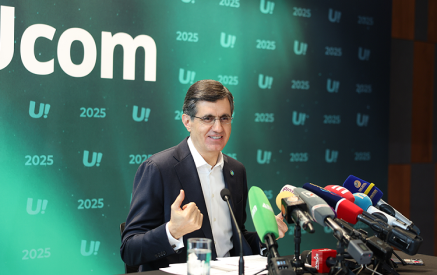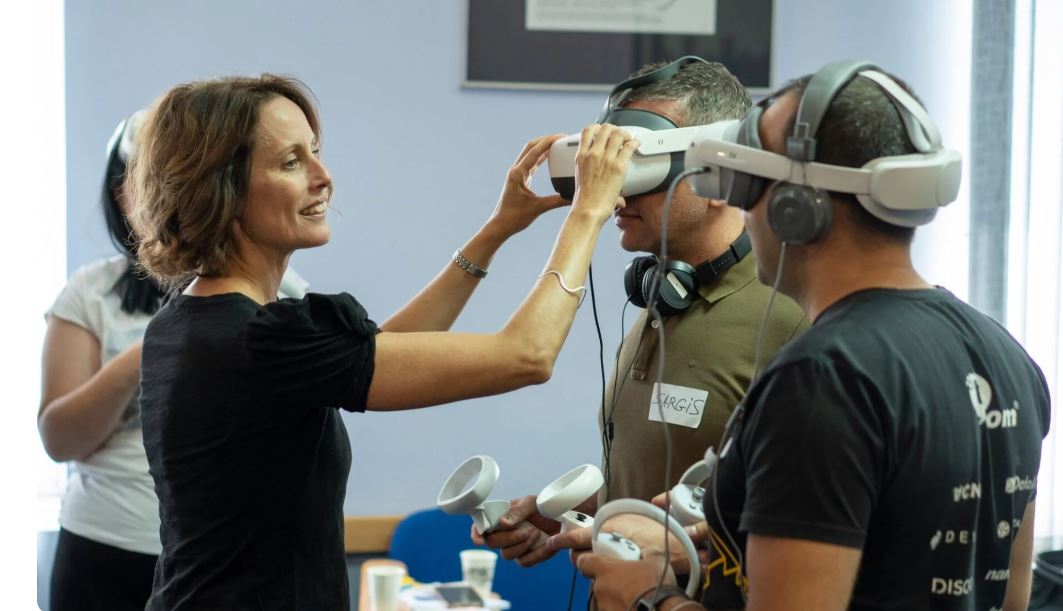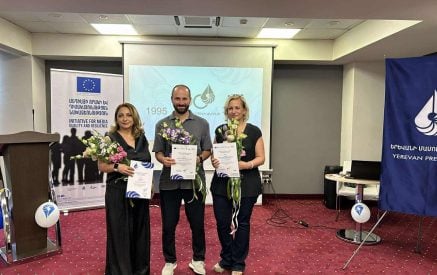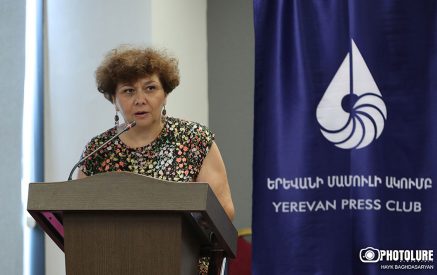During the 2020 conflict with Azerbaijan, Armenia’s media landscape faced a challenging situation in which there was no systematic approach to crisis management. Medias responded based on their respective capacities and initiative, while individual journalists went to the frontlines reliant solely on their physical and psychological capacity to cope.
Acknowledging this gap, the Media Initiatives Centre (MIC), along with other media organisations, quickly established a rapid response group.
“We realised that it was necessary to combine all the efforts and funds to support journalists with equipment and outfits to work on the frontline,” says Narine Safaryan, Head of Training at the Media Initiative Centre, an Armenian-based partner of the EU-funded ‘European Media Facility in Armenia Project’. However, she adds, “the lack of policies, resources, and training was evident, as was the need for on-the-ground mentorship.”
To address this, the MIC developed a programme of safety training for journalists.
Read also
Crisis response for self-awareness
The training programme’s objective is to ensure that there are trained journalists within each media house and editorial office who have each gone through an extensive Train-the-Trainer Programme and are therefore capable of both managing crises and sharing their knowledge within their teams.
Despite Armenia’s unfortunate experience of crises, wars, and massive demonstrations, it is not feasible to develop training modules using such real-life events. This is why the MIC has sought to integrate Virtual Reality (VR) into its training framework – and it has proved to be a valuable tool. With expert guidance, participants have engaged with emergency scenarios through VR headsets, and learnt essential skills to navigate and manage these situations.
“Through VR, journalists look at their emotions from the side. They follow their reactions to the crisis, in other words, they discover themselves,” explains Gevorg Tosunyan, a journalist at independent online media platform CivilNet, who participated in the security training in autumn 2023.
The training entails:
- Local journalists engaging in VR simulations of emergency scenarios and practicing on-the-spot reporting and responses.
- Participants developing their own individual training models based on their experience and insights.
- Participants sharing this knowledge by training their peers at their own media organisations.
Hayarpi Baghdasaryan works for Infocom, a Yerevan-based, not-for-profit media company. In his experience, “Virtual reality training is not just about learning to navigate crises.” Baghdasaryan has found it be “an exercise in self-awareness allowing your mind and body to respond to emergencies, which is crucial in our daily exposure to conflict situations.”
VR mirrors real-life scenarios
VR training modules are lifelike. One scenario takes you to a massive protest where, as a journalist, you become targeted by protesters. You must be able to respond to the situation and at the same time provide first aid to your colleague. During the post-simulation discussion journalists have the opportunity to share their insights.
“One of the participants, who studied psychology for many years, did not expect that virtual reality would be so close to real life. Later, during the discussion, that person mentioned [experiencing] panic and anxiety throughout,” says Baghdasaryan. He adds that “another participant, who already had the experience of covering protests, was able to show an adequate response, again based on the [VR] experience.”
Narine Safaryan underlines the dual focus of the safety-training: “It integrates first aid with crisis journalism. During simulations, journalists learn the essential rules of both disciplines.”
Other modules deal with digital security, which is another priority for journalists nowadays.
Drawing on his military background, Gevorg Tosunyan emphasises the importance of teaching a self-protective approach in emergencies. “My training module is based on my own experience. It is of primary importance to me to instruct journalists not to report near military units, for instance, or heavy artillery, as that would make them a target,” adding that “VR episodes complement the course as the participants practice it through simulations.”
The VR training modules also proved invaluable to Hayarpi Baghdasaryan who found himself reporting from the southern town of Goris in September 2022 during three days of clashes along the border with Azerbaijan. “In my course matrix, I used those situations I encountered myself,” he explained, adding, “Along with that, I also researched cases that journalists faced while covering the Russian-Ukrainian war.”
The question remains, how should journalists react in crises?
But training journalistic colleagues can be challenging, says Baghdasaryan, particularly when you may not have all the answers yourself. “During the training, I tried to be as focused as possible, to follow not only my emotions but also those of my colleagues, I raised issues and questions whenever possible.” he says.
At the same time he believes it is important to recognise that the trainer’s responsibility is different, “you have to teach your colleagues who may have questions that you did not foresee. Sometimes my emotions can cloud my judgment. I may not be able to give the right advice on making a decision during an emergency, so I stick to the ‘common sense’ approach in my curriculum, prioritising journalist safety above all.”
SMART training is implemented in the framework of the EU4 Independent Media project funded by the European Union, with the support of the European Media Facility in Armenia Project.
Author: Diana Shahbazyan

























































